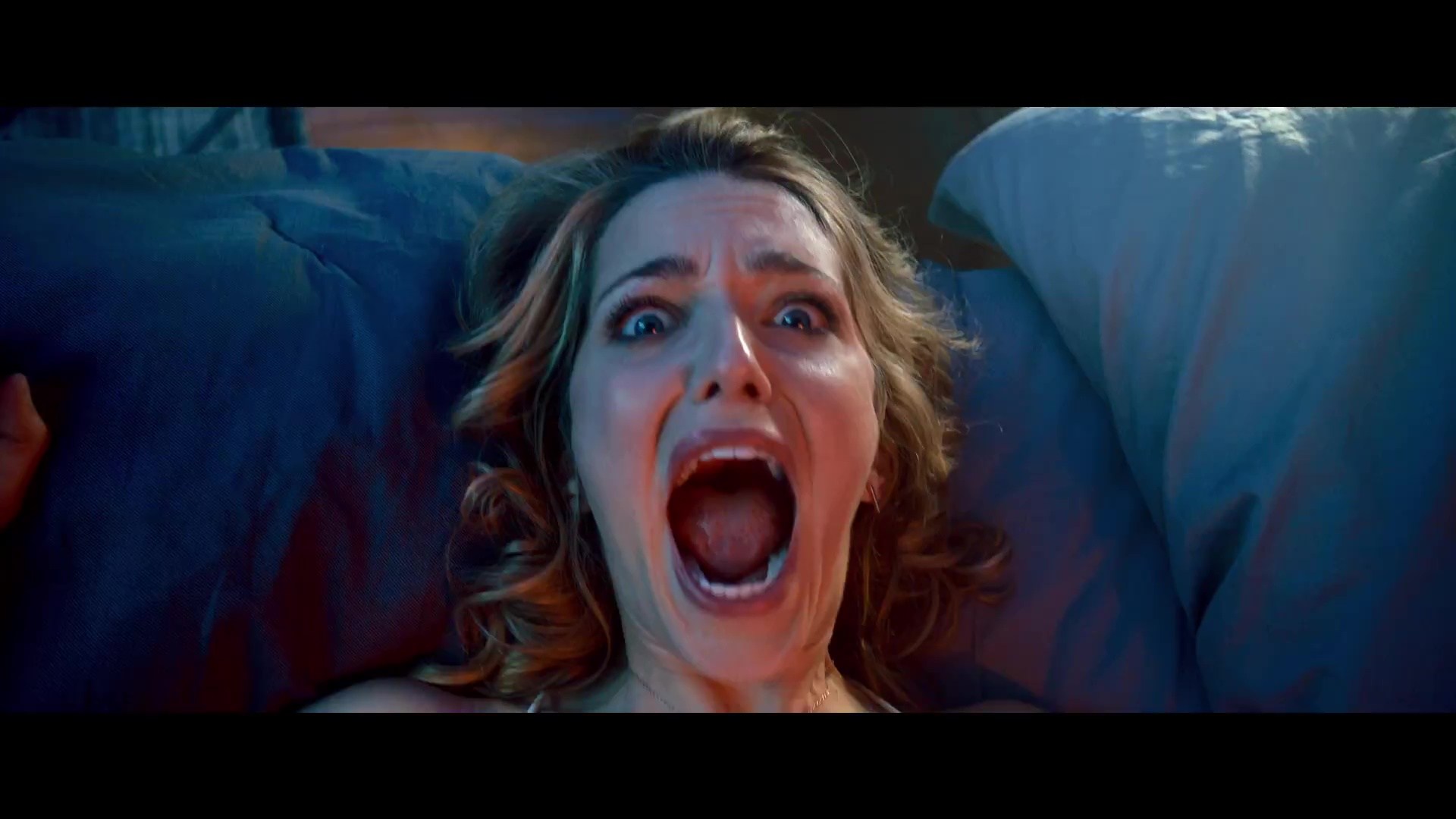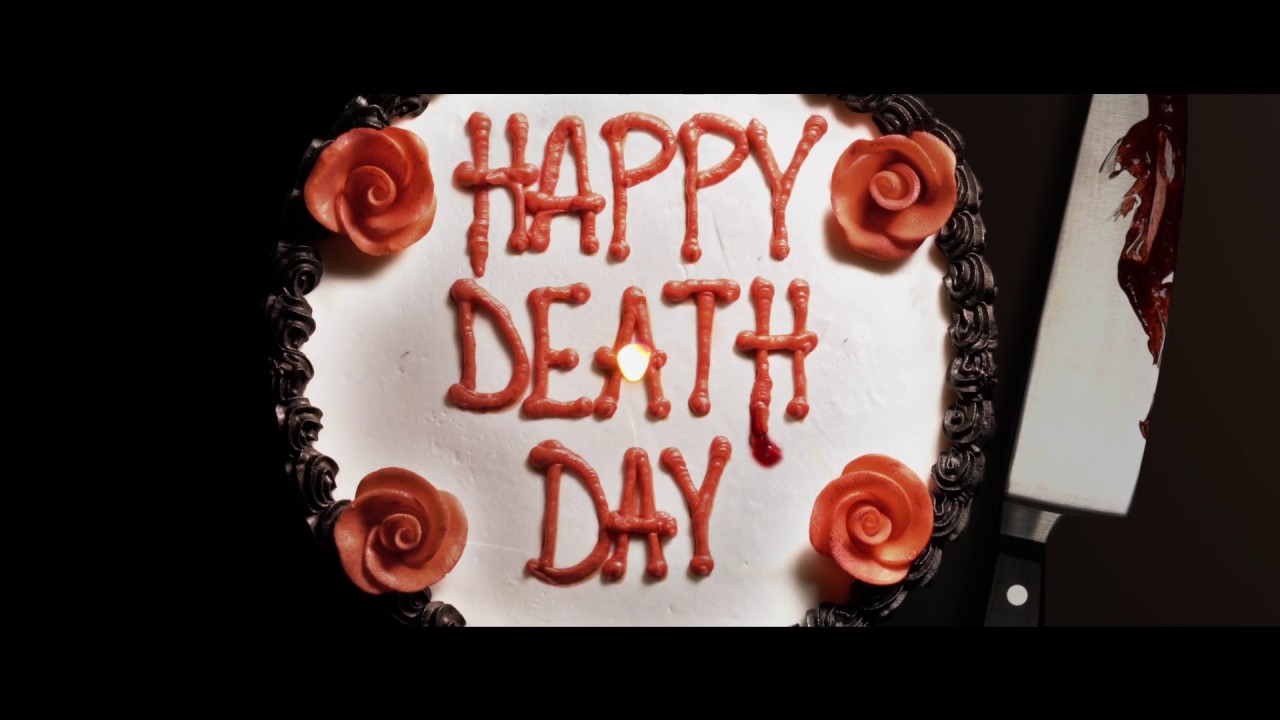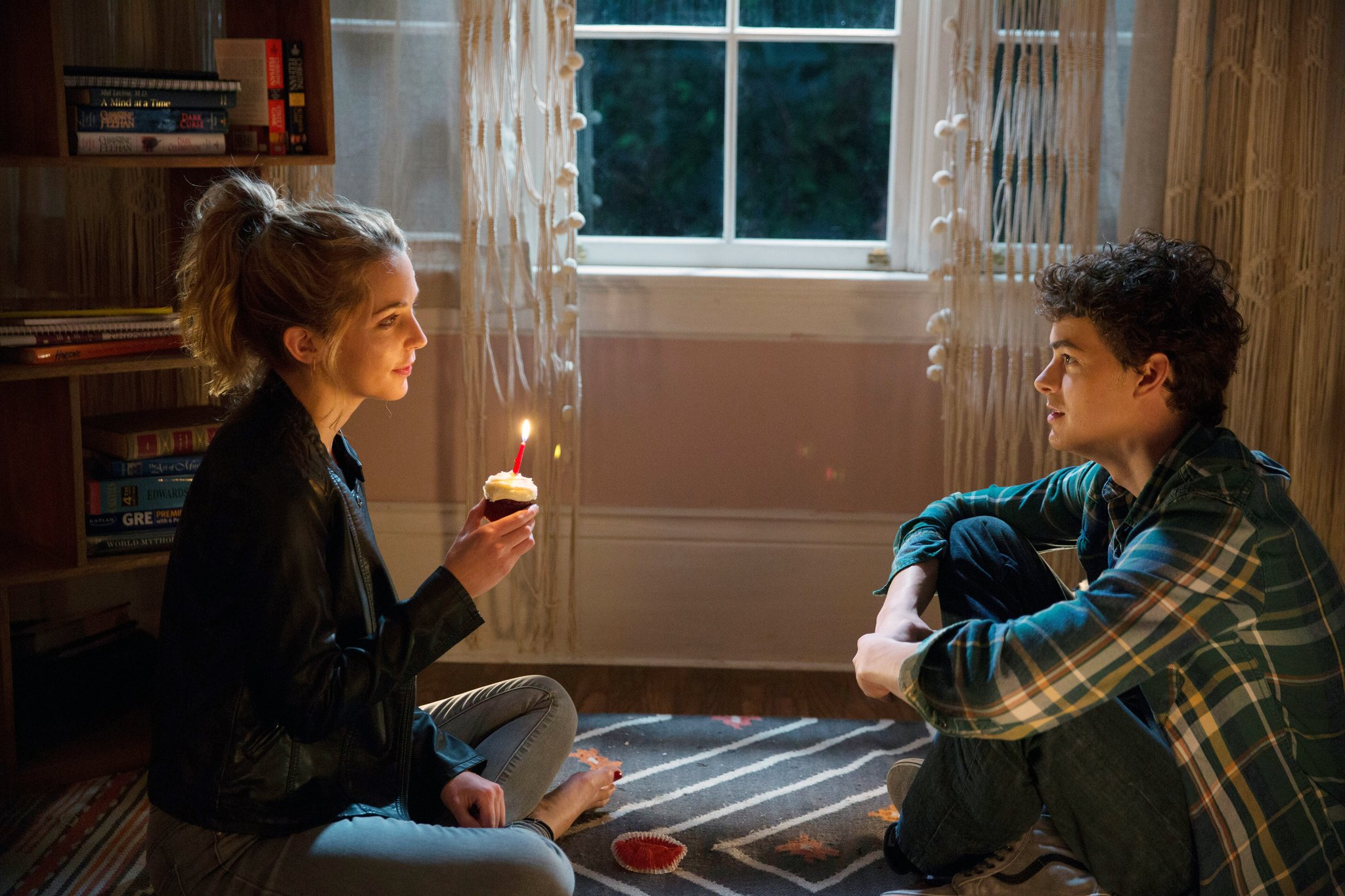It’s so hard to pin down, or even to make out the boundaries of, the feelings that horror movies have towards the late adolescent white woman, aged roughly 17-23. Maybe hatred is too strong of a word – it’s more a mixture of envy, contempt, worship, and desire. I would suggest it’s the difficulty in figuring out exactly how the film feels about them that necessitates their bloody death, and the separation of one to be superior to the rest. And Happy Death Day is a fascinating place to tease out these feelings.
For one, the film’s structure – another spin on the Groundhog Day formula, to go along with Edge of Tomorrow and the quickly-forgotten Marlon Wayans’ vehicle Naked, in which a hard-partying sorority girl is murdered every night, only to wake up again in bed the next morning – reduces the many bodies of the classic slasher to one singular body. Jessica Rothe bears the brunt of almost all the film’s pent-up violence, repeatedly giving us that slasher money shot: her face, framed in the center, screaming, as the camera-knife descends on her.

In Happy Death Day, it is her indestructibility (which is never explained) that brings to the surface the issues surrounding the white, blonde, female body.
In his recent collection Against Everything, Mark Greif argues that the cult of the teenager that our culture promotes (which we see in everything from constant defenses of the quality of young adult fiction to the brief period in which certain sections of the Internet felt it was their duty to read and praise Teen Vogue) doesn’t actually come from a respect for them. It comes more from a feeling of having been shortchanged ourselves on adolescent freedom – a feeling that high school and college were never the joyful free-for-all promised by TV, movies, and everything else – and a desire to perpetuate that period as much as we can.

I think there’s something to his piece (which I’m paraphrasing very badly), and it’s what was running through my head while watching Happy Death Day. The movie has more in common with Groundhog Day than just its conceit. In between slowly moving her way towards solving the mystery, Rothe’s protagonist learns to be a better person, with a very particular definition of “better.”
She signs an anti-global warming petition, which between this and The Good Place is quickly becoming the gold standard of morality. She snoops on a creepy ex-boyfriend while trying to find the murderer (in a montage set to a Demi Lovato track, which may be, without sarcasm, the montage of the year), and, after finding him watching gay porn, pressures him into coming out. She starts dating the harmless dork in whose dorm room she keeps waking up.
So, just as much as it is a slasher, Happy Death Day is also a story about graduating and being integrated into a very well-defined concept of maturity – the liberal-flavored version of the 2.6 kids fantasy. But why mix that story with a slasher? Why are these scenes of bourgeois maturation interwoven with scenes of our heroine being stabbed to death? It’s a bizarre mixture.

Maybe – and I’ll be thinking about this movie for a long time, so I’ll probably come up with more theories – it’s self-flagellation, a punishing of the body that has too much fun. It’s almost a guarantor of having wrung late adolescence out. She can only move into the adult bourgeois world because she has traversed the fantasy of the body. Maybe that puts Happy Death Day thematically in the canon of explorations of sex drive, along with Belle de Jour and others.
Or maybe I’m way off. But it’s a wonderfully peculiar movie, and it’s going to take years to untangle it.

